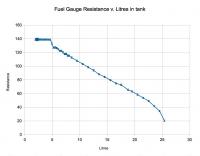ANZAC
Well-known member
you do not need to run a full tank to check this problem. I always watch the fuel gague as it drops from one setting to the next. Usually get
at least 30 miles before the first bar drops on a Gen 1, and average 30 miles per bar. I got some bad gas once, the bike ran fine BUT first bar
dropped at 22 mpg, so got Seafoam at next stop, returned home drained the tank, reloaded with good fuel & more Seafoam & all was fine.
Not anal but I can tell by the bar drop compared to mileage from last fill up weather I am being a hoon or not or have problems.
That's good to know - 30 miles per bar as mine went 32 miles the other day pulling off of full. Still getting to know this bike






















































